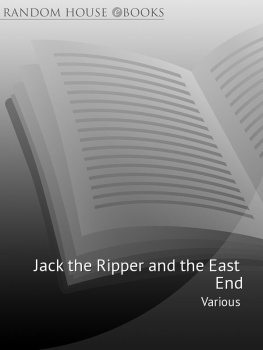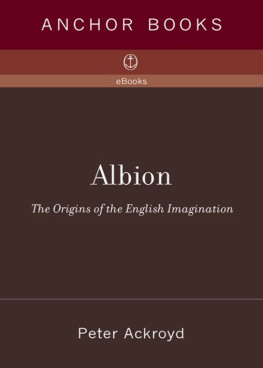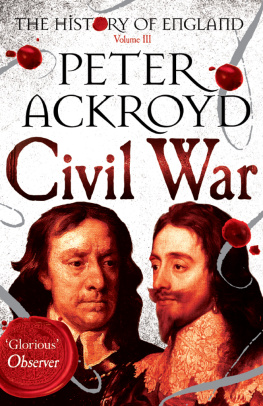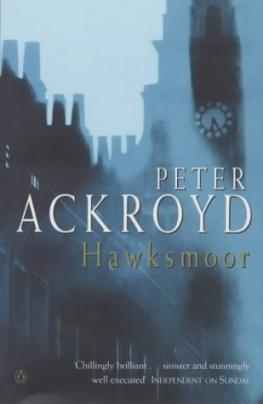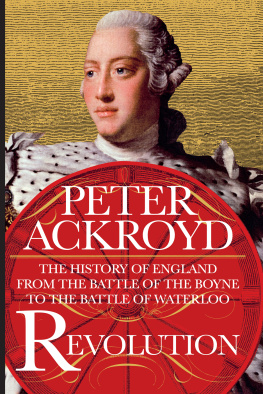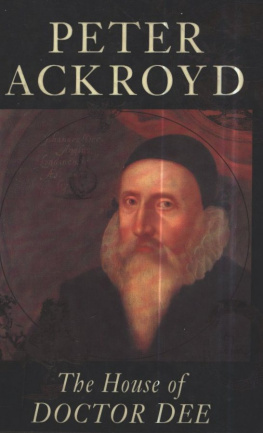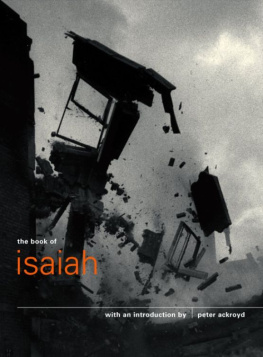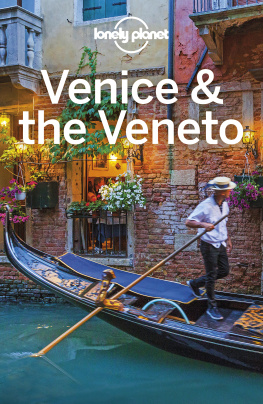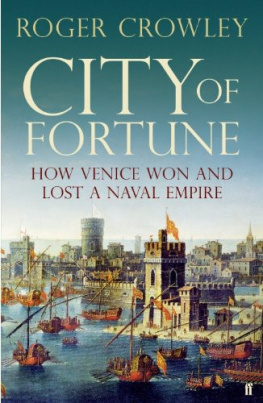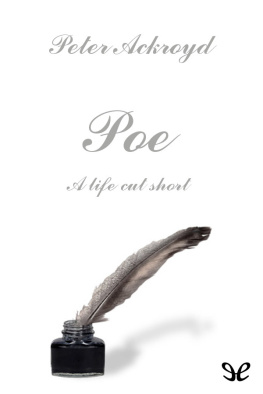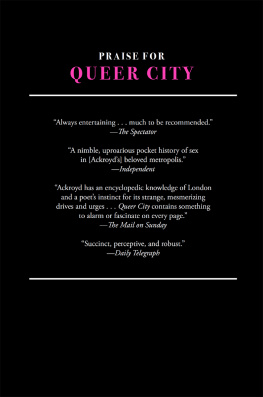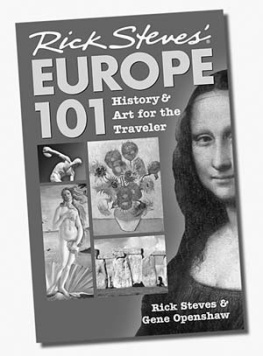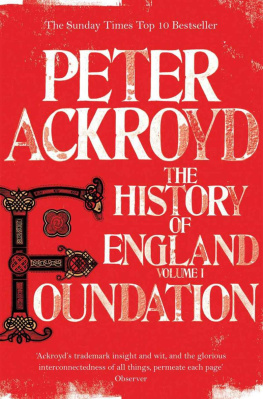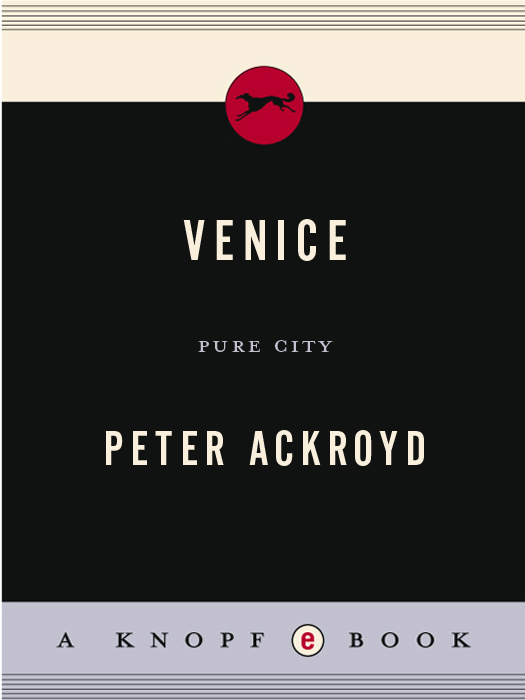All rights reserved. Published in the United States by Nan A. Talese / Doubleday, a division of Random House, Inc., New York.
Doubleday is a registered trademark of Random House, Inc. Nan A. Talese and the colophon are trademarks of Random House, Inc.
Acknowledgements
I would like to thank my two research assistants, Thomas Wright and Murrough OBrien, for their invaluable work on this project. I would also like to extend my thanks to my editor, Jenny Uglow, and my copy-editor, Jenny Overton.
Contents
List of Illustrations
Section One
Cristoforo Sabbadino, Map of Venice, c.1557. Archivio di stato, Venice/Cameraphoto Arte Venezia/Bridgeman
Perspective plan of Venice (detail). Muse du Louvre, Paris/Cameraphoto/Bridgeman
The mosaics in Saint Marks cathedral, late 14c. Alinari/Rex Features
The Madonna, cathedral of Santa Maria Assunta, Torcello, early 13c. akg-images/Cameraphoto
The Flood, mosaic in the narthex, western portico, of Saint Marks cathedral, 13c. akg-images/Erich Lessing
Tintoretto (Jacopo Robusti), The Stealing of the Body of Saint Mark, 156266. Galleria dellAccademia/Cameraphoto/Bridgeman
The Lion of Saint Mark, 15c., Museo Correr/Bridgeman
Monks praying to Saint Theodore, from a Mariegola, 1350. Museo Correr/Bridgeman
Simon Marsden, The columns of Saint Mark and Saint Theodore, Piazzeta San Marco. The Marsden Archive, UK/Bridgeman
Gentile Bellini, Procession on the Piazza S. Marco, 1496. Galleria dellAccademia/akg-images/Erich Lessing
Piazza S. Marco, c.188090. Roger-Viollet/Rex Features
Gentile Bellini, The Miracle of the Cross on San Lorenzo Bridge, 1500. Galleria dellAccademia/Bridgeman
Francesco Guardi, The Departure of the Bucintoro towards the Lido on Ascension Day (detail), 176670, Muse du Louvre/Giraudon/Bridgeman
Vittore Carpaccio, The patriarch of Grado heals a possessed man on the Rialto Bridge (detail), 1494 Galleria dellAccademia/akg-images/Cameraphoto
Section Two
Paolo Veronese, The Battle of Lepanto, 1571. Galleria dellAccademia, Venice/akg-images
Plan of the Arsenal. Museo Correr, Venice/Bridgeman
Franceso Segala, a Venetian warship, on the Mausoleum of Girolamo Michiel, c. 155859. Basilica of SantAntonio, Padua/Bridgeman
Sign for the Marangoni family of shipbuilders, 1517. Museo Correr/Alinari/Bridgeman
Jan van Grevenbroeck, Dredging a Canal, 18c. Museo Correr/Giraudon/Bridgeman
Jan van Grevenbroeck, An Oar-Maker from the Arsenal, 18c. Museo Storico Navale, Venice/Bridgeman
Jan van Grevenbroeck, A Venetian Doctor during the Plague, 18c. Museo Correr/Bridgeman
Jan van Grevenbroeck, Venetian Bellmakers Shop, 18c. Museo Correr/Bridgeman
Venetian glass in the Pauly showrooms, Milan, 1910. Alinari/Rex Features
Lace workers on Burano, 19c. Collezione Naya-Bohm, Venice/Bridgeman
Ferdinando Ongania, A Venetian Courtyard, c. 1880. Museo di Storia della Fotografia Fratelli Alinari, Florence/Bridgeman
A funeral gondola, 18801920. Collezione Naya-Bohm, Venice/Bridgeman
Giovanni Pividor, The railway bridge across the lagoon, from Views of Principal Monuments in Venice, 1850. Bridgeman
The remains of the Campanile, La Domenica del Corriere, 27 July 1902. Cameraphoto Arte Venezia Corriere/Bridgeman
Windows of the Early Gothic Palaces, from John Ruskin, The Stones of Venice, 18513
Section Three
Giovanni Bellini, Leonardo Loredan, Doge of Venice, c.1501. National Gallery, London/Bridgeman
Joseph Heintz, Audience with the Doge in the College of the Ducal Palace, early 17c. Museo Correr/Bridgeman
Pietro Uberti, Portrait of three lawyers, Orazio Bembo, Orazio Angarano and Melchior Gabriel, 1730. Palazzo Ducale/Cameraphoto/Bridgeman
Jacobello del Fiore, Justice and the Archangels, 1421. Galleria dellAccademia/Cameraphoto/Bridgeman
The lions mouth. Palazzo Ducale/Bridgeman
The Pozzi prison, from Vedute delle Prigioni, 18c. Museo Correr/Bridgeman
Vittore Carpaccio, Dream of Saint Ursula, 1495, Galleria dellAccademia/Cameraphoto/Bridgeman
Pietro Longhi, The Tailor, 17423. Galleria dellAccademia/Cameraphoto/Bridgeman
Pietro Longhi, The Geography Lesson, c.17502. Galleria Querini-Stampalia/Bridgeman
Pietro Longhi, The Perfume Seller, c.1750. CaRezzonico, Museo del Settecento/Alinari/Bridgeman
Madonna of Mercy, 16c. Museo Correr/Alinari/Bridgeman
Paolo Veneziano, Madonna and Child Enthroned with Two Devout People, 14c. Galleria dellAccademia/Cameraphoto/Bridgeman
Giovanni Battista Cima da Conegliano, The Coronation of the Virgin, late 15c. Santi Giovanni e Paolo, Venice/Cameraphoto/Bridgeman
Giorgione (Giorgio da Castelfranco), The Tempest, c.15068. Galleria dellAccademia/Cameraphoto/Bridgeman
Giovanni Bellini, Young Woman at Her Toilet, 1515. Kunsthistorisches Museum, Vienna/akg-images/Erich Lessing
Titian (Tizian Vecellio), Venus of Urbino (detail), before 1538. Galleria degli Uffizi, Florence/Bridgeman
Section Four
Paolo Veronese, The Marriage Feast at Cana (detail), c. 1562. Muse du Louvre/Giraudon/Bridgeman
Gabriele Bella, Concert by the girls of the hospital music societies in the Procuratie, Venice, 18c. Galleria Querini-Stampalia/Bridgeman
Francesco Guardi, The Parlour of the San Zaccaria Convent


